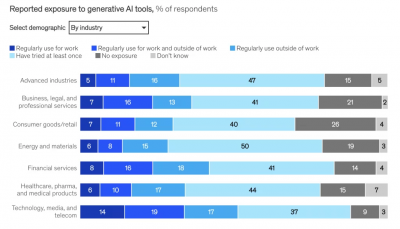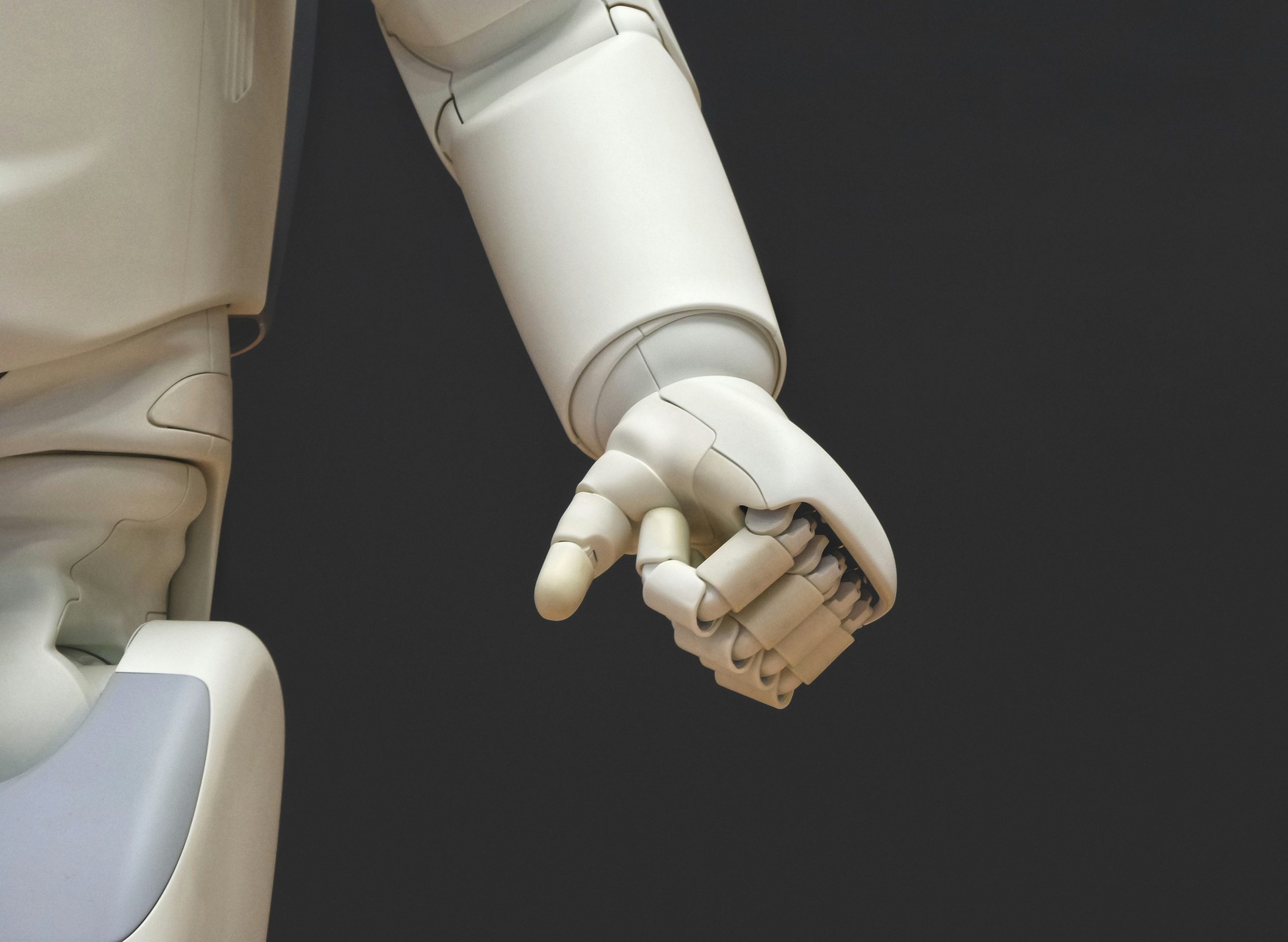Generative AI has taken center stage in the ability to change the dynamics in industries, hence enabling the creation of content or new solutions and ideas by devices. Moving one step further into 2024, there is greater hope that generative AI is going to move another step further in most capabilities, making a very significant unlock in possibilities and applications. For businesses looking to harness these advancements, engaging with AI consulting can provide valuable insights into how to effectively integrate generative AI into their operations. This article goes deep into the main trends to be followed within generative AI, focusing on the most important industry advances and the latest statistics shaping the landscape.
What is Generative AI?
Generative AI is the part of artificial intelligence concerned with the creation of new content by learning from existing data. When understanding meaning of generative AI, it goes beyond traditional AI, which primarily focuses on analysis and prediction. Generative AI generates new outputs such as text, images, and music.
The important techniques are Generative Adversarial Networks, in which a generator and a discriminator work together to fine-tune content, and Variational Autoencoders, which learn the structures underlying the data to generate new samples. It influences various disciplines by allowing creative arts, scientific research, and others through the realization of new solutions and extending human-machine collaboration.
A Quick Recap Of GenAI In 2023
The generative AI market is projected to reach USD 66.62 billion by 2024 and is expected to grow at a compounded annual growth rate of 20.80% from 2024 to 2030, reaching USD 207.00 billion by 2030.
2023 was most certainly the year for Generative AI. It is all about having able robot sidekicks at your disposal. Take OpenAI’s ChatGPT—a computer program that can help you write, look up information, and grasp what you nicely ask.
GPT-4 is the new version of ChatGPT that is going to let people write better and understand more by reading even images. Then there’s DALL·E, from OpenAI, able to turn your words into pictures.
From generating text content to creating graphics, videos, and even business presentations, that’s how Generative AI has evolved in the last year.

Trends to Watch in 2024
1. Enhanced Model Capabilities and Efficiency
We expect to see significant improvement in the power of generative AI models during 2024. Better model architectures and improved training methodologies are in the focus of leading-edge companies developing generative AI for enhancing efficiency and raising the bar on the accuracy these systems can provide.
Advanced Architectures
One of the major trends would be the development of more sophisticated model architectures. Generative adversarial networks(GANs), variational autoencoders(VAEs), and other new frameworks will continually evolve and produce better and more diverse outputs. Next-generation AI systems, powered by these improvements, will be able to create much more realistic images, text, and other content—another step that keeps the boundaries associated with what generative AI can do firmly on the move.
Improved Training Techniques
Better training methodologies would play a pivotal role in enhancing model performance. Few-shot learning, meta-learning, and transfer learning approaches will largely become more applicable in general, which will aid generative AI models toward learning from a few examples and toward easier switching of different tasks while doing the same. This will decrease the large needs of computational perspectives during the learning process.
2. Integration into Business Processes
Generative AI is being integrated into business processes more and more, bringing with it new avenues of innovation and efficiency. Techniques such as OpenAI function calling allow AI models to execute specific functions, streamlining operations and enhancing productivity. Moving into 2024, businesses will find even further ways in which they can leverage generative AI to improve their operations.
Content Creation
Generative AI is the much-needed tool that content creation would require to create text, images, and videos of quality. AI software development services then go ahead to give solutions that can automate the generation of this content for marketing, journalism, and entertainment, saving time and resources for companies without losing a bit of creativity and engaging traits.
Product Design and Development
Generative AI is further going to alter product design and development. By applying AI to the generation and evaluation of various design options, it becomes possible for companies to accelerate the innovation process and create a higher number of possibilities. This approach will be extremely useful in sectors like fashion, automotive, and consumer electronics, in which design is one of the most important factors for market success.
Personalized Customer Experiences
Another important area in which generative AI will make a big difference is in personalization. AI-driven systems would analyze user preferences and behaviors to develop customized recommendations, content, and experiences. For instance, AI voice agents can provide real-time, context-aware interactions that feel tailored to individual needs. Resulting customer satisfaction and engagement will yield greater brand loyalty and business outcomes.
3. Ethical and Regulatory Considerations
The ethical and regulatory considerations will become much more relevant over time, as generative AI becomes pervasive. Resolving the issues of concern will clearly play an important role in achieving the responsible development and deployment of AI.
Data Privacy and Security
In this respect, generative AI development service providers would lend the topmost priority to the concerns of data privacy and security. The fact that AI systems deal with sensitive data responsibly and within the parameters of the protection of personal data regulations would be very important in keeping users’ trust and avoiding potential misuse.
Bias and Fairness
As AI systems are scaling in sophistication, there remains a large concern about biased AI systems. With generative AI models constantly scaling towards sophisticated models, the issue of bias and fairness in AI-generated content can no longer be avoided. The strategies will have to involve the detection and mitigation of bias to ensure that at least fair and not biased output comes from AI systems.
Intellectual Property and Copyright
Intellectual property and copyright issues will also be in the limelight. Since generative AI systems are creating new content, questions might arise related to ownership and originality. Clear guidelines and legal frameworks shall be needed to solve these issues, protecting creators and those of other stakeholders.
4. Collaborative and Hybrid AI Systems
One of the key trends in 2024 would concern collaborative and hybrid AI systems. It uses the strengths of generative AI and other AI approaches with human expertise to provide for more comprehensive and effective solutions.
Human-AI Collaboration
It means that with generative AI, the ability for humans to work alongside AIs will become prominent in the near future and therefore develop a creativity of their own while working in tandem with human experts. The ability to make more informed decisions or enhance innovation within several fields can be furthered by using AI-based insights and suggestions.
Multi-Modal AI Systems
Next-generation, multi-modal AI systems will prevail, with multiple kinds of data—text, image, and audio—coming together. Such systems would offer the full-bodied solution: versatile for next-generation applications ranging from AI agents and virtual assistants to content creation and data analysis.
5. Evolving Applications and Use Cases
The applications and use cases of generative AI will continue to expand in 2024, offering new opportunities across different sectors.
Healthcare and Drug Discovery
Generative AI in healthcare will significantly boost the drug discovery and personalized medicine system. AI systems provide the ability to perform complex analyses of biological data to come up with new drug candidates, predict treatment outcomes, and develop treatment plans according to an individual’s need. Thus, it speeds up research in new frontiers of medical science and patient care.
Entertainment and Media
The entertainment and media industries will benefit from generative AI’s ability to create engaging content and experiences. AI-generated music, scripts, and interactive media will offer new ways to entertain and engage audiences, transforming the way we consume and create content.
Education and Training
Generative AI will also impact education and training by creating personalized learning materials and simulations. AI-driven systems will generate tailored educational content and interactive training scenarios, enhancing the learning experience and improving skill development.
6. Statistics and Market Trends
Knowing the new statistics on generative AI will help in getting insights into its growth and impact. According to reports, the generative AI market is projected to grow enormously in the next couple of years. The key statistics in this regard would include:
Market Growth
The generative AI market is foreseen to rise above a CAGR of 50.22% during the period from 2023 to 2028. This would be driven by its increasing adoption across industries and an expanded application portfolio.
Investment and Funding
Subsequent investment in generative AI startups and research increases, with massive funding applied to the sector. Venture capital and corporate investments surge innovation and speed up the development of new technologies in generative AI.
Adoption Rates
The adoption rate for generative AI technologies is likely to be on the rise through different industries. More and more businesses are beginning to realize the potential of generative AI in driving innovation, enhancing efficiency, and improving customer experience.
Conclusion
Innovations in model architecture, business application, and ethical considerations will drive the future of generative AI in 2024. Continuing to charge into the unknown, with companies developing generative AI directly on the front line and further being supported by AI software development services, we are going to witness never-before-seen changes that are transformative across many industry sectors. Equipped with trend and statistical information, businesses and stakeholders in a fast-changing digital environment can drive innovation to achieve set goals through generative AI.
Author Bio:

Ishan Vyas is one of the founders of Citrusbug and a seasoned technical content writer with over 10 years of experience in the industry. With a passion for technology and a knack for translating complex concepts into accessible content, Ishan has been instrumental in helping readers understand and navigate the ever-evolving world of Software Development. You can connect with him on Linkedin.


